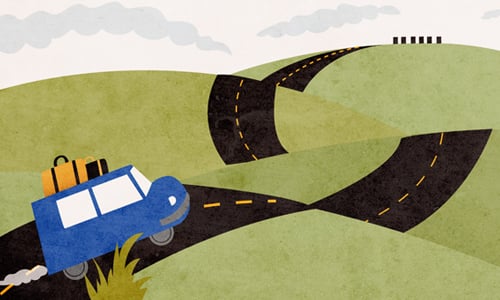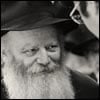
When I first heard the word in grade school, I didn’t know exactly what it meant; I just knew I hated doing it. My family and I were on vacation in Washington, D.C., and I asked my mother about the plans for the day. She told me the activity would be more of this thing called “sightseeing.” I was mystified that anyone could actually find it fun.
Everyone knows that when you travel with kids, it’s not really a vacation, it’s a trip. And inevitably, there will be memories, some more fond than others. But what kinds of memories are made when you take your family every summer to visit a cemetery? That’s what my husband and I did by going to the Lubavitcher Rebbe’s resting place in Queens, N.Y., every year for his yahrtzeit on Gimmel Tammuz, the third of Tammuz.
The trip we took as a family on the Gimmel Tammuz in 1994 is almost a total blur. I mostly remember the moment we arrived at the Old Montefiore Cemetery after driving through the night, the moment I realized we forgot to grab shoes for our 7-year-old son, Izzy.
A few years later, we decided to take our second family trip to the cemetery in honor of the Rebbe’s yahrtzeit. That was when I recognized the importance of this journey as an opportunity to thank the Rebbe for being G‑d’s emissary, for making our family what it is.
The Rebbe and his father-in-law, the Previous Rebbe, are buried side by side inside an open-air concrete edifice known as the Ohel (Hebrew for “tent”). You don’t have to be Lubavitch or even Jewish to be among the hundreds of thousands of people who visit the Ohel every year; all you need is a desire to share with the Rebbe what’s in your heart and soul, and to ask for his assistance.
Our early family trips for Gimmel Tammuz taught me that the bodily inconveniences of this annual pilgrimage—brought on by crowds, exhaustion and weather challenges—had to be construed positively. Fortunately, the people behind the Ohel scene get better every year at preparing for the yahrtzeit commemoration and the growing number of visitors. Tented coverings make it more comfortable for the men and women waiting in their separate lines; there are lots of security people and water coolers, and videos of the Rebbe playing on well-positioned monitors for inspiration.
Some years, a Gimmel Tammuz trip meant going right into the Ohel. Other years, it meant standing in line for hours. And in the years when we took our young children, it meant telling them that no matter what happened, we were having fun. It also meant making sure they wrote to the Rebbe. Even before they could actually write, I would tell them to express something to the Rebbe in a pan (an acronym for pidyon nefesh, the note one writes asking the Rebbe to intercede in prayer for those being written about). I remember one year this entailed drawing pictures on nine or ten pieces of paper (Sholom) and a lot of complaining about not being able to find the right pen (Rivky). I just wanted them to get comfortable writing to the Rebbe, so they would eventually be able to share openly whatever was in their hearts.
Now that my children are grown, going to the Ohel for Gimmel Tammuz is a different experience. My head doesn’t spin quite the same way it did when the police would call out “TWO MINUTES. TWO MINUTES . . . THE NEXT GROUP IS WAITING,” as my older girls and I tried to pass a squirming, sweaty toddler among ourselves, hoping to collect our thoughts for an auspicious two minutes with the Rebbe.
But no matter what my circumstances are on Gimmel Tammuz, the most meaningful words still come from me effortlessly, just as they did then:
“Thank you, Rebbe . . .”
Everything after that is a bonus.





